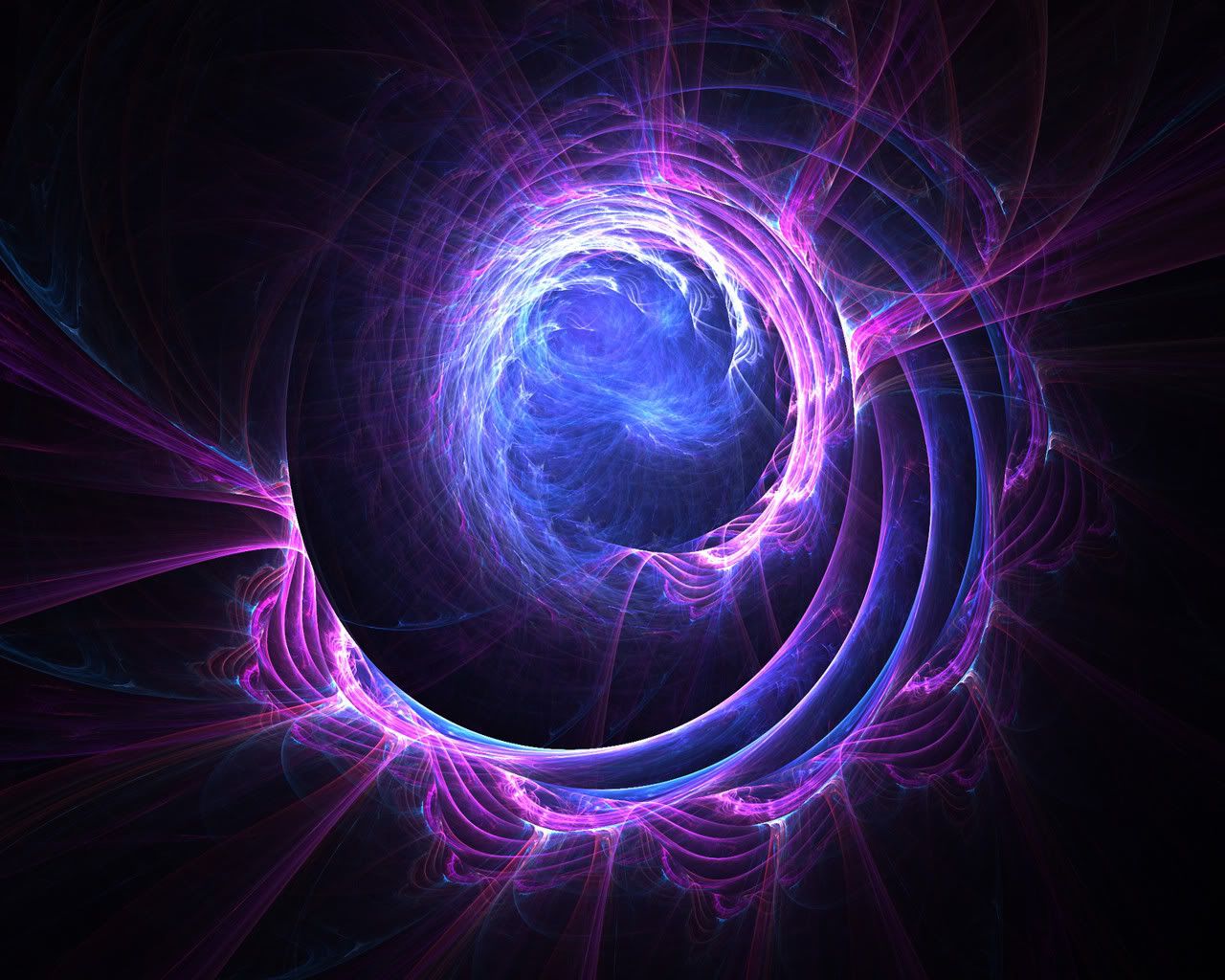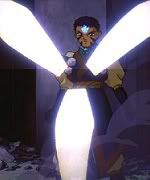Post by Darin Rosewood on Sept 9, 2007 20:21:10 GMT -5
This is copied from a book, so don't mind any random references to the author's personal modifications to it if you don't want to.
Your subconscious takes you out of your body every night. With practice
you can use this to your advantage: You can train your subconscious to
"wake you up" after it has left the body.
The best time to attempt an OBE is in the morning, after you have woken
up naturally. Give your body plenty of rest. The trick is to make your body
tired enough to stay in a relaxed state, but not too tired. The body should
be well rested but relaxed and the mind must be alert.
Here is a step-by-step technique. Follow the steps, start practicing and
you’ll finally have an OBE.
Relaxation
Relaxation is important because if you aren't relaxed, you'll have too much
consciousness focused in your body. Ideally, your physical body should be
completely relaxed in every respect during practice. I recommend
practicing relaxation every day until you can completely relax your physical
body in a few minutes.
Systematically tighten each muscle and make it tense until there is a slight
fatigue, then let go and feel the muscle relax. After you've relaxed every
muscle, start over and check every muscle again.
While you're relaxing, pretend as vividly as you can that you do not have
your left arm; as if it's been cut off and you can't feel it. When the
sensation of having no arm becomes quite real to you, that arm is very
relaxed. Next, pretend that your other arm does not exist. After that start
with your legs.
Next, relax your face completely. Here's one way to relax your face: With
your eyes closed, stare deeper and deeper into the blackness, while very
slowly tightening your eyebrows and rolling your eyes up slightly until your
eyebrow muscles become tired. Then completely relax your facial muscles
for about 15 seconds. Repeat the process again until your eyebrow
muscles are tired again, and relax again for another 15 seconds. Repeat
this process about six or seven times. Completely relax your whole body
again and then try to make your mind blank and relaxed too. The
vibrations may even come at this point, making the rest of the process
unnecessary! After you're completely relaxed, pay no more attention to
your body.
Focus Your Mind
There are five key points to focusing your mind for OBE induction: state of
mind, realism, motion, receptivity and passivity.
When you are trying to leave your body the most important thing is your
state of mind. The best state of mind is one in which you are a quiet,
completely passive, single-minded observer. Realism is about of the
degree of focus. This world seems real to us because we are so focused
here. You should learn to focus outside your body to such a degree that it
all becomes real. Focus your mind into that single thread of consciousness.
Motion concerns the swaying motion you feel within your body. I start an
inner "swaying" sensation in my imagination that later becomes quite real.
Then I use the momentum of the swaying to propel myself out of my
body. Pretend that your body is gently swaying back and forth, or left to
right in a regular motion. Try to make this swaying feeling as vivid as
possible.
Receptivity. This receptive state of mind is important in calling or inducing
the vibrations. You should learn to make yourself receptive to whatever
comes during practice.
In this passive state, your mind does not wander. You are not emotional.
You are not analytical either. You are merely an observer. Visualization is
important in many OBE techniques and this passive state of mind makes it
easier to visualize images a long time without your mind "wandering."
In this passive state, you can initiate actions (like the visualizations)
without responding to them. You fall asleep by becoming interested in,
and responding to your own thoughts and visualizations. If you can initiate
that state and keep your consciousness out of that dream-trap, you can
retain your consciousness after it leaves your body. You just want to
become a passive observer.
I've talked before about needing to suspend a certain portion of your
consciousness to leave your body. Suspend the portion that has a vested
interest in what's happening.
Slow your thoughts and bring yourself into that passive and receptive state
of mind. Clear your mind of all thoughts. If you don't have a method try
the following: With your eyes closed, pretend that you're looking for
something that might appear directly in front of you. Just quietly watch
your mental viewing screen. Stare into the blackness.
Edge of Consciousness
The next step is "edge of consciousness," exploring the border between
waking and sleeping. Allow yourself to start falling asleep, but then "catch"
yourself and rouse yourself again and make sure you're fully conscious. Let
yourself start to fall asleep again, this time allowing yourself to get a little
closer toward sleep, then rouse yourself again. Do this several times until
your body is very relaxed and your mind is in that "passive" framework
that I discussed.
Visualize an object
Next, visualize a small object, such as a small cube, about six feet directly
in front of your face. Visualize this as clearly as you can. Don't continue
until you can see this object clearly in your mind's eye.
Sway the Object a Small Amount
Then begin to move the object back and forth. At first, visualize only a tiny
amount of movement, as if the object is merely slowly swaying toward you
and away from you.
Keep the object swaying constantly. Don't let it stop moving. Keeping the
object in motion will help to stabilize the image in your mind and give it
more realism.
Increase the Amount of Swaying
Slowly increase the distance the object sways. Keep swinging the image
back and forth toward you, each time bringing it a bit closer to you. As you
do this, the image may seem to become more real. Make sure your
visualization has a sense of perspective and depth. Each time the object
comes closer, it should look bigger. Each time the object pulls away, it
should look smaller. Remember, you must also keep that passive state of
mind during the entire exercise.
Sway Opposite To The Object
Try to feel as if you are swaying in the opposite direction as the object.
Imagine the object has a strong gravity that affects your swaying. As the
object swings closer to you, you are pulled toward it. As it swings away
from you, you sway back to your original position within your body.
As the object gets closer and closer with each swing, feel its gravity pull
you more and more in its direction.
Grab The Object And Let It Pull You Out
After the image becomes very vivid, when it swings close to you, "grab"
onto the image with your mind. As the image swings away, your
consciousness will follow it and will be consciously pulled away from your
body.
At this point you will be out of your body. Then you can "let go" of that
state of mind, expand your consciousness and you will be very wide awake
and very alert. You are then free to explore the nonphysical world!
It is important to examine your consciousness during the experience to
make sure that you are not dreaming. During the experience, ask yourself,
"Is this really happening, or is it a dream?" After you return to your body
recall how conscious you were during the experience.
Learning to leave your body is something that takes a lot of time, practice
and patience. Don't expect results over night. This chapter has a lot of
information to absorb at once. You may spend several attempts just trying
to remember all the subtleties involved. The good news is, the first OBE is
the hardest. Once you've had an OBE, it's easier to induce more.
you can use this to your advantage: You can train your subconscious to
"wake you up" after it has left the body.
The best time to attempt an OBE is in the morning, after you have woken
up naturally. Give your body plenty of rest. The trick is to make your body
tired enough to stay in a relaxed state, but not too tired. The body should
be well rested but relaxed and the mind must be alert.
Here is a step-by-step technique. Follow the steps, start practicing and
you’ll finally have an OBE.
Relaxation
Relaxation is important because if you aren't relaxed, you'll have too much
consciousness focused in your body. Ideally, your physical body should be
completely relaxed in every respect during practice. I recommend
practicing relaxation every day until you can completely relax your physical
body in a few minutes.
Systematically tighten each muscle and make it tense until there is a slight
fatigue, then let go and feel the muscle relax. After you've relaxed every
muscle, start over and check every muscle again.
While you're relaxing, pretend as vividly as you can that you do not have
your left arm; as if it's been cut off and you can't feel it. When the
sensation of having no arm becomes quite real to you, that arm is very
relaxed. Next, pretend that your other arm does not exist. After that start
with your legs.
Next, relax your face completely. Here's one way to relax your face: With
your eyes closed, stare deeper and deeper into the blackness, while very
slowly tightening your eyebrows and rolling your eyes up slightly until your
eyebrow muscles become tired. Then completely relax your facial muscles
for about 15 seconds. Repeat the process again until your eyebrow
muscles are tired again, and relax again for another 15 seconds. Repeat
this process about six or seven times. Completely relax your whole body
again and then try to make your mind blank and relaxed too. The
vibrations may even come at this point, making the rest of the process
unnecessary! After you're completely relaxed, pay no more attention to
your body.
Focus Your Mind
There are five key points to focusing your mind for OBE induction: state of
mind, realism, motion, receptivity and passivity.
When you are trying to leave your body the most important thing is your
state of mind. The best state of mind is one in which you are a quiet,
completely passive, single-minded observer. Realism is about of the
degree of focus. This world seems real to us because we are so focused
here. You should learn to focus outside your body to such a degree that it
all becomes real. Focus your mind into that single thread of consciousness.
Motion concerns the swaying motion you feel within your body. I start an
inner "swaying" sensation in my imagination that later becomes quite real.
Then I use the momentum of the swaying to propel myself out of my
body. Pretend that your body is gently swaying back and forth, or left to
right in a regular motion. Try to make this swaying feeling as vivid as
possible.
Receptivity. This receptive state of mind is important in calling or inducing
the vibrations. You should learn to make yourself receptive to whatever
comes during practice.
In this passive state, your mind does not wander. You are not emotional.
You are not analytical either. You are merely an observer. Visualization is
important in many OBE techniques and this passive state of mind makes it
easier to visualize images a long time without your mind "wandering."
In this passive state, you can initiate actions (like the visualizations)
without responding to them. You fall asleep by becoming interested in,
and responding to your own thoughts and visualizations. If you can initiate
that state and keep your consciousness out of that dream-trap, you can
retain your consciousness after it leaves your body. You just want to
become a passive observer.
I've talked before about needing to suspend a certain portion of your
consciousness to leave your body. Suspend the portion that has a vested
interest in what's happening.
Slow your thoughts and bring yourself into that passive and receptive state
of mind. Clear your mind of all thoughts. If you don't have a method try
the following: With your eyes closed, pretend that you're looking for
something that might appear directly in front of you. Just quietly watch
your mental viewing screen. Stare into the blackness.
Edge of Consciousness
The next step is "edge of consciousness," exploring the border between
waking and sleeping. Allow yourself to start falling asleep, but then "catch"
yourself and rouse yourself again and make sure you're fully conscious. Let
yourself start to fall asleep again, this time allowing yourself to get a little
closer toward sleep, then rouse yourself again. Do this several times until
your body is very relaxed and your mind is in that "passive" framework
that I discussed.
Visualize an object
Next, visualize a small object, such as a small cube, about six feet directly
in front of your face. Visualize this as clearly as you can. Don't continue
until you can see this object clearly in your mind's eye.
Sway the Object a Small Amount
Then begin to move the object back and forth. At first, visualize only a tiny
amount of movement, as if the object is merely slowly swaying toward you
and away from you.
Keep the object swaying constantly. Don't let it stop moving. Keeping the
object in motion will help to stabilize the image in your mind and give it
more realism.
Increase the Amount of Swaying
Slowly increase the distance the object sways. Keep swinging the image
back and forth toward you, each time bringing it a bit closer to you. As you
do this, the image may seem to become more real. Make sure your
visualization has a sense of perspective and depth. Each time the object
comes closer, it should look bigger. Each time the object pulls away, it
should look smaller. Remember, you must also keep that passive state of
mind during the entire exercise.
Sway Opposite To The Object
Try to feel as if you are swaying in the opposite direction as the object.
Imagine the object has a strong gravity that affects your swaying. As the
object swings closer to you, you are pulled toward it. As it swings away
from you, you sway back to your original position within your body.
As the object gets closer and closer with each swing, feel its gravity pull
you more and more in its direction.
Grab The Object And Let It Pull You Out
After the image becomes very vivid, when it swings close to you, "grab"
onto the image with your mind. As the image swings away, your
consciousness will follow it and will be consciously pulled away from your
body.
At this point you will be out of your body. Then you can "let go" of that
state of mind, expand your consciousness and you will be very wide awake
and very alert. You are then free to explore the nonphysical world!
It is important to examine your consciousness during the experience to
make sure that you are not dreaming. During the experience, ask yourself,
"Is this really happening, or is it a dream?" After you return to your body
recall how conscious you were during the experience.
Learning to leave your body is something that takes a lot of time, practice
and patience. Don't expect results over night. This chapter has a lot of
information to absorb at once. You may spend several attempts just trying
to remember all the subtleties involved. The good news is, the first OBE is
the hardest. Once you've had an OBE, it's easier to induce more.










